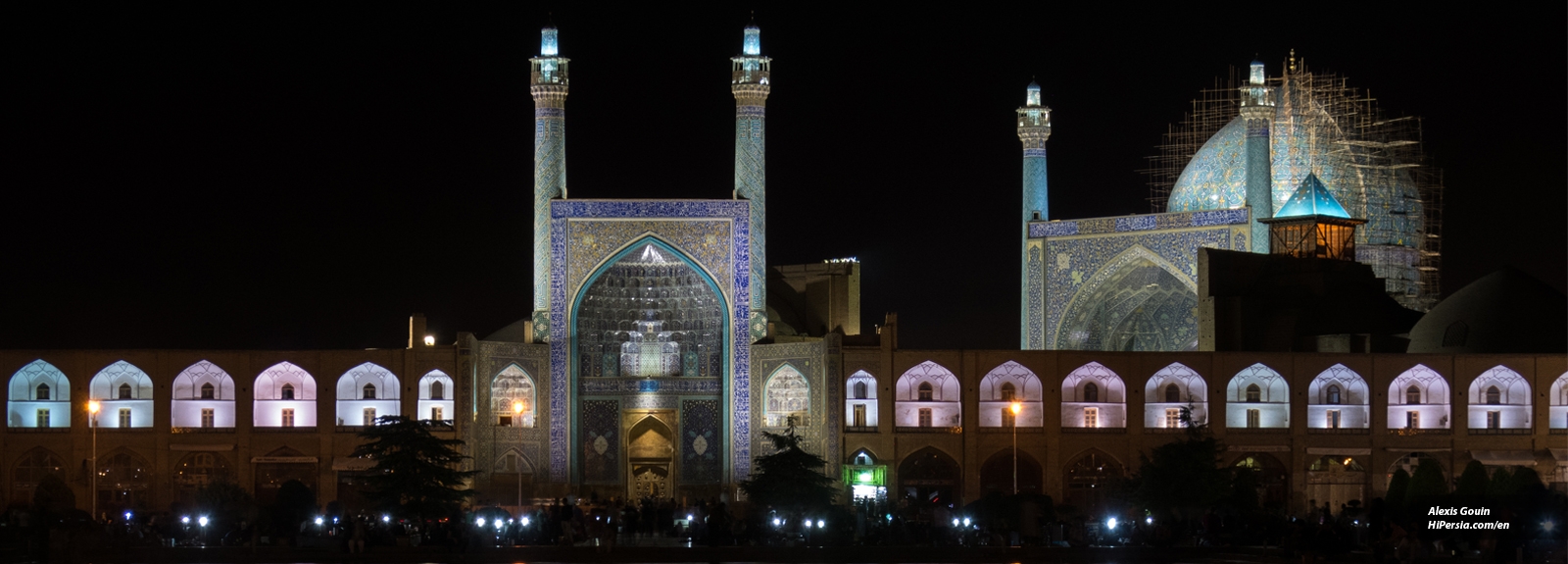



Imam Mosque is the most prominent historical mosque in the Isfahan, which located on the southern side of the Naqsh-e Jahan Square.
The Imam Mosque is also known as the Shah Mosque, was built during the Safavid dynasty. It is one of the most prominent monuments of Islamic Architecture. It is designed in the Isfahani style (categories of Iranian architecture). The Imam Mosque is registered as a UNESCO World Heritage site.
The Imam mosque has been built in the direction of the qibla, southwest. Different parts of this mosque are as follows: Dome, two main minarets in line with qibla, two minarets of portal in line with the Naqsh-e Jahan Square, four Iwans (the entrance structure of traditional places) around the Myansara (courtyard in Islamic Architecture), western and eastern Shabestan (a space like a chamber that can be usually found in traditional places), Soleymaniyeh school, and Naseri school.
To enter Imam Mosque, you should pass two steps at first: pass the Pishkhan, and next, cross the Hashti. Pishkhan is a space at the beginning part which invites people to enter the mosque. The equivalent of Hashti in English is vestibule.
Its onion dome is the most prominent structure of this mosque. You can see this two-shelled dome from each part of Naqshe-e Jahan Square. The outdoor shell of this dome has a height aof bout 52 meters, which is decorated with Qashani. There is a vast space, as Sahn, under this dome with 40 pillars and vaults. The two-shelled dome has caused echo, stability, and better temperature insulation.
One of the fascinating and technical parts of the Imam Mosque occurs under the central point of the dome. You can hear the sounds echoing at this part over a radius of 40 meters.
There are four Iwans around the Myansara. The tallest Iwan has a height of 33 meters, on which the main minarets of the mosque are placed on both sides of it. You will see marvelous Qashani on this portal, which has been drawn with Mosaic. This Qashani includes two patterns of peacock and some flower patterns.

Shabestan is a space, like a chamber, that can usually be found in traditional places such as a mosque. There are two Shabestans on the eastern and western sides of the Myansara of Imam Mosque. The eastern Shabestan is larger than the western one without any ornamentation, but the other one is decorated with seven-colored tiles. Also, the western Shabestan has a fabulous Mihrab which is made of marble. Mihrab is a semicircular niche in the wall of a mosque.

Late March to late May is the best time to visit the Imam Mosque. At this time, the weather is mild and you can walk through the Naqsh-e Jahan Square and visit each four spectacular historical monuments of the Safavid dynasty.






“Oh! Squander not this breath that Heaven hath lent thee, Nor make too sure another breath to borrow!’” Khayam